Opinion & Analysis
Do you really need to buy new wedges?
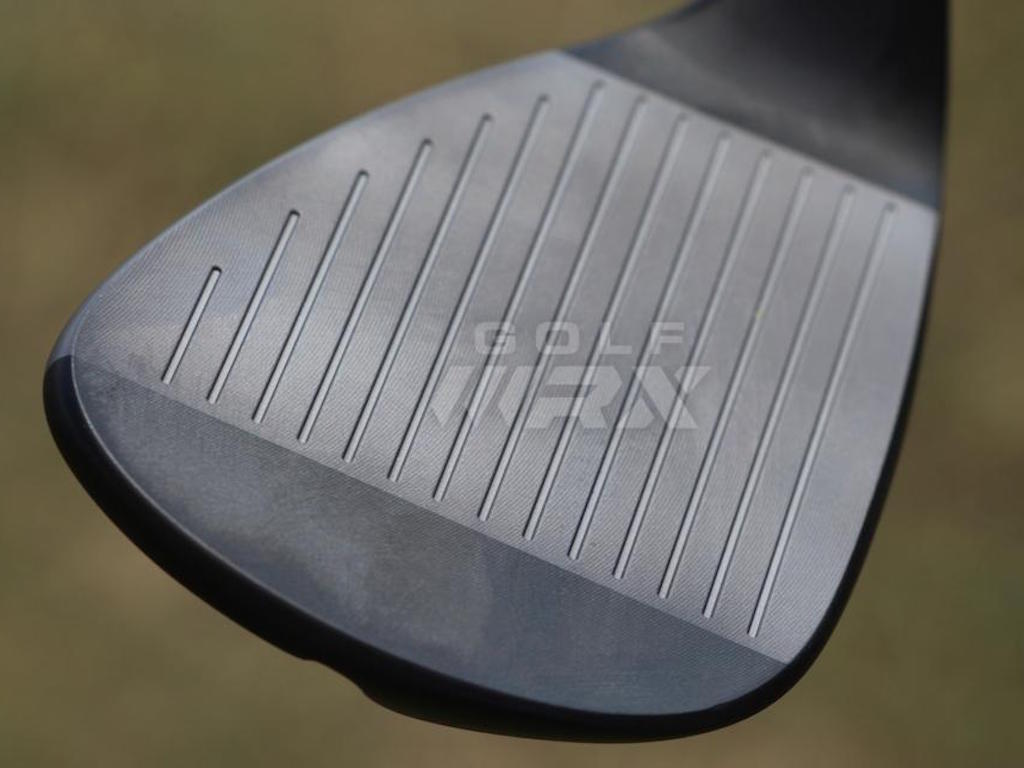
I’m as guilty as the rest of the golfing population when it comes to replacing my wedges too infrequently. Quite frankly, the only time I’ve changed them over the last few years is when I’ve been sent new clubs to test by my equipment sponsor.
If I was left on my own, I’m sure I would use my wedges until the paint fell off. It’s NOT the best idea, but my attitude has been like a lot of you in the golfing world: “It really doesn’t matter for as little golf as I play.”
This story was prompted by a few new wedges I was sent to try. We all hear about how often PGA Tour players change their wedges, and how much spin we’re losing by not changing our wedges more frequently. It is true?
To help you understand the real impact of worn grooves, I put it to the test. I hit four common wedge shots with three different wedges on Trackman that included:
- A new, 58-degree wedge
- A worn-out, 58-degree wedge (used for one season)
- A “super” worn-out, 58-degree wedge (used for multiple seasons)
The New Wedge
The Worn-Out Wedge
The “Super” Worn-Out Wedge
The Results
10-Yard Flop
- Super Worn: 3398 rpm
- Worn: 4262 rpm
- New: 4226 rpm
25-Yard Stock Shot
- Super Worn: 5249 rpm
- Worn: 4613 rpm
- New: 5291 rpm
40-Yard Stock Shot
- Super Worn: 6739 rpm
- Worn: 6195 rpm
- New: 6710 rpm
The only thing I can tell you about the 25- and 40-yard shot is that the super worn-out wedge seemed to have a sharper leading edge, and it felt like it was digging perfectly for my motion. As you can see in the Trackman screen shots at the bottom of this story, the ball was coming out flatter than the worn-out wedge, which decreased my spin loft and added spin.
For more information on spin loft with wedges, see “The Wedge Project” by Andrew Rice at www.andrewricegolf.com
Full Shot (80 Yards)
- Super Worn: 9435 rpm, peak spin rate of 10,117 rpm
- Worn: 10,260 rpm, peak spin rate of 10,400 rpm
- New: 10,641 rpm, peak spin rate of 11,121 rpm
The numbers tell us that wedge gurus are correct in saying that new wedges work better than the old ones when it comes to creating spin. The older the wedge, the less it will likely spin at all distances.
For that reason, I would suggest changing your wedges when you begin to see the initial effects of wear so you can keep your “grip” on the greens. The first signs include wedge shots that launch higher than normal — particularly from the rough — and don’t stop or spin back as much as they once did.
- LIKE242
- LEGIT56
- WOW12
- LOL15
- IDHT6
- FLOP21
- OB15
- SHANK128
Opinion & Analysis
The Wedge Guy: What really makes a wedge work? Part 2

In my last post, I explained the basic performance dynamics of “smash factor” and “gear effect” as they apply to your wedges and your wedge play success. If you missed that post, you can read it here.
At the end of that post, I promised “part 2” of this discussion of what makes a wedge work the way it does. So, let’s dive into the other two components of any wedge – the shaft and the grip.
It’s long been said that the shaft is “the engine of the golf club.” The shaft (and grip) are your only connection to all the technologies that are packed into the head of any golf club, whether it be a driver, fairway, hybrid, iron, wedge or even putter.
And you cannot ignore those two components of your wedges if your goal is optimizing your performance.
I’ve long been an advocate of what I call a “seamless transition” from your irons into your wedges, so that the feel and performance do not disconnect when you choose a gap wedge, for example, instead of your iron-set-matching “P-club.” In today’s golf equipment marketplace, more and more golfers are making the investment of time and money to experience an iron fitting, going through trial and error and launch monitor measuring to get just the right shaft in their irons.
But then so many of those same golfers just go into a store and choose wedges off the retail display, with no similar science involved at all. And that’s why I see so many golfers with a huge disconnect between their custom-fitted irons, often with lighter and/or softer graphite or light steel shafts . . . and their off-the-rack wedges with the stock stiff steel ‘wedge flex’ shaft common to those stock offerings.
If your wedge shafts are significantly heavier and stiffer than the shafts in your irons, it is physically impossible for you to make the same swing. Period.
To quickly improve your wedge play, one of the first things you can do is have your wedges re-shafted with the same or similar shaft that is in your irons.
There’s another side of that shaft weight equation; if you don’t have the forearm and hand strength of a PGA Tour professional, you simply cannot “handle” the same weight shaft that those guys play to master the myriad of ‘touch shots’ around the greens.
Now, let’s move on to the third and other key component of your wedges – the grips. If those are not similar in shape and feel to the grips on your irons, you have another disconnect. Have your grips checked by a qualified golf club professionals to make sure you are in sync there.
The one caveat to that advice is that I am a proponent of a reduced taper in your wedge grips – putting two to four more layers of tape under the lower hand, or selecting one of the many reduced taper grips on the market. That accomplishes two goals for your scoring.
First, it helps reduce overactive hands in your full and near-full wedge swings. Quiet hands are key to good wedge shots.
And secondly, it provides a more consistent feel of the wedge in your hands as you grip down for those shorter and more delicate shots around the greens. And you should always grip down as you get into those touch shots. I call it “getting closer to your work.”
So, if you will spend as much time selecting the shafts and grips for your wedges as you do choosing the brand, model, and loft of them, your scoring range performance will get better.
More from the Wedge Guy
- The Wedge Guy: What really makes a wedge work? Part 1
- The Wedge Guy: The easiest-to-learn golf basic
- The Wedge Guy: Golf mastery begins with your wedge game
- LIKE2
- LEGIT1
- WOW0
- LOL0
- IDHT1
- FLOP0
- OB0
- SHANK1
19th Hole
Vincenzi’s 2024 Wells Fargo Championship betting preview: Tommy Fleetwood ready to finally land maiden PGA Tour title

The PGA Tour season ramps back up this week for another “signature event,” as golf fans look forward to the year’s second major championship next week.
After two weaker-field events in the Zurich Classic and the CJ Cup Byron Nelson, most of the best players in the world will head to historic Quail Hollow for one of the best non-major tournaments of the year.
Last season, Wyndham Clark won the event by four shots.
Quail Hollow is a par-71 measuring 7,521 yards that features Bermudagrass greens. The tree-lined, parkland style course can play quite difficult and features one of the most difficult three-hole stretches in golf known as “The Green Mile,” which makes up holes 16-18: two mammoth par 4s and a 221-yard par 3. All three holes have an average score over par, and water is in play in each of the last five holes on the course.
The field is excellent this week with 68 golfers teeing it up without a cut. All of the golfers who’ve qualified are set to tee it up, with the exception of Scottie Scheffler, who is expecting the birth of his first child.
Past Winners at Quail Hollow
- 2023: Wyndham Clark (-19)
- 2022: Max Homa (-8)
- 2021: Rory McIlroy (-10)
- 2019: Max Homa (-15)
- 2018: Jason Day (-12)
- 2017: Justin Thomas (-8) (PGA Championship)
- 2016: James Hahn (-9)
- 2015: Rory McIlroy (-21)
Key Stats For Quail Hollow
Strokes Gained: Approach
Strokes gained: Approach will be extremely important this week as second shots at Quail Hollow can be very difficult.
Total SG: Approach Over Past 24 Rounds
- Akshay Bhatia (+1.16)
- Tom Hoge (+1.12)
- Corey Conners (+1.01)
- Shane Lowry (+0.93)
- Austin Eckroat (+0.82)
Strokes Gained: Off the Tee
Quail Hollow is a long course on which it is important to play from the fairway. Both distance and accuracy are important, as shorter tee shots will result in approach shots from 200 or more yards. With most of the holes heavily tree lined, errant drives will create some real trouble for the players.
Strokes Gained: Off the Tee Past 24 Rounds:
- Ludvig Aberg (+0.73)
- Rory McIlroy (+0.69)
- Xander Schauffele (+0.62)
- Viktor Hovland (+0.58)
- Chris Kirk (+0.52)
Proximity: 175-200
The 175-200 range is key at Quail Hollow. Players who can hit their long irons well will rise to the top of the leaderboard.
Proximity: 175-200+ over past 24 rounds:
- Cameron Young (28’2″)
- Akshay Bhatia (29’6″)
- Ludvig Aberg (+30’6″)
- Sam Burns (+30’6″)
- Collin Morikawa (+30’9″)
SG: Total on Tom Fazio Designs
Players who thrive on Tom Fazio designs get a bump for me at Quail Hollow this week.
SG: Total on Tom Fazio Designs over past 36 rounds:
- Patrick Cantlay (+2.10)
- Rory McIlroy (+1.95)
- Tommy Fleetwood (+1.68)
- Austin Eckroat (+1.60)
- Will Zalatoris (+1.57)
Strokes Gained: Putting (Bermudagrass)
Strokes Gained: Putting has historically graded out as the most important statistic at Quail Hollow. While it isn’t always predictable, I do want to have it in the model to bump up golfers who prefer to putt on Bermudagrass.
Strokes Gained: Putting (Bermudagrass) Over Past 24 Rounds:
- Taylor Moore (+0.82)
- Nick Dunlap (+.76)
- Wyndham Clark (+.69)
- Emiliano Grillo (+.64)
- Cam Davis (+.61)
Course History
This stat will incorporate players that have played well in the past at Quail Hollow.
Course History over past 36 rounds (per round):
- Rory McIlroy (+2.50)
- Justin Thomas (+1.96)
- Jason Day (+1.92)
- Rickie Fowler (+1.83)
- Viktor Hovland (+1.78)
Wells Fargo Championship Model Rankings
Below, I’ve compiled overall model rankings using a combination of the five key statistical categories previously discussed — SG: Approach (27%), SG: Off the Tee (23%), SG: Total on Fazio designs (12%), Proximity: 175-200 (12%), SG: Putting Bermuda grass (12%), and Course History (14%).
- Wyndham Clark
- Rory McIlroy
- Xander Schauffele
- Shane Lowry
- Hideki Matsuyama
- Viktor Hovland
- Cameron Young
- Austin Eckroat
- Byeong Hun An
- Justin Thomas
2024 Wells Fargo Championship Picks
Tommy Fleetwood +2500 (DraftKings)
I know many out there have Tommy fatigue when it comes to betting, which is completely understandable given his lack of ability to win on the PGA Tour thus far in his career. However, history has shown us that players with Fleetwood’s talent eventually break though, and I believe for Tommy, it’s just a matter of time.
Fleetwood has been excellent on Tom Fazio designs. Over his past 36 rounds, he ranks 3rd in the field in Strokes Gained: Total on Fazio tracks. He’s also been incredibly reliable off the tee this season. He’s gained strokes in the category in eight of his past nine starts, including at The Masters, the PLAYERS and the three “signature events” of the season. Tommy is a golfer built for tougher courses and can grind it out in difficult conditions.
Last year, Fleetwood was the first-round leader at this event, firing a Thursday 65. He finished the event in a tie for 5th place.
For those worried about Fleetwood’s disappointing start his last time out at Harbour Town, he’s bounced back nicely after plenty of poor outings this season. His T7 at the Valero Texas Open was after a MC and T35 in his prior two starts and his win at the Dubai Invitational came after a T47 at the Sentry.
I expect Tommy to bounce back this week and contend at Quail Hollow.
Justin Thomas +3000 (DraftKings)
It’s been a rough couple of years for Justin Thomas, but I don’t believe things are quite as bad as they seem for JT. He got caught in the bad side of the draw at Augusta for last month’s Masters and has gained strokes on approach in seven of his nine starts in 2024.
Thomas may have found something in his most recent start at the RBC Heritage. He finished T5 at a course that he isn’t the best fit for on paper. He also finally got the putter working and ranked 15th in Strokes Gained: Putting for the week.
The two-time PGA champion captured the first of his two major championships at Quail Hollow back in 2017, and some good vibes from the course may be enough to get JT out of his slump.
Thomas hasn’t won an event in just about two years. However, I still believe that will change soon as he’s been one of the most prolific winners throughout his PGA Tour career. Since 2015, he has 15 PGA Tour wins.
Course history is pretty sticky at Quail Hollow, with players who like the course playing well there on a regular basis. In addition to JT’s PGA Championship win in 2017, he went 4-1 at the 2022 Presidents Cup and finished T14 at the event last year despite being in poor form. Thomas can return as one of the top players on the PGA Tour with a win at a “signature event” this week.
Cameron Young +3500 (DraftKings)
For many golf bettors, it’s been frustrating backing Cam Young this season. His talent is undeniable, and one of the best and most consistent performers on the PGA Tour. He just hasn’t broken through with a victory yet. Quail Hollow has been a great place for elite players to get their first victory. Rory McIlroy, Anthony Kim, Rickie Fowler and Wyndham Clark all notched their first PGA Tour win at Quail.
Throughout Cam Young’s career, he has thrived at tougher courses with strong fields. This season, he finished T16 at Riviera and T9 at Augusta National, demonstrating his preference of a tough test. His ability to hit the ball long and straight off the tee make him an ideal fit for Quail Hollow, despite playing pretty poorly his first time out in 2023 (T59). Young should be comfortable playing in the region as he played his college golf at Wake Forest, which is about an hour’s drive from Quail Hollow.
The 26-year-old has played well at Tom Fazio designs in the past and ranks 8th in the field in Strokes Gained: Total on those courses in his last 36 rounds. Perhaps most importantly, this season, Young is the best player on the PGA Tour in terms of proximity from 175-200 in the fairway, which is where a plurality and many crucial shots will come from this week.
Young is an elite talent and Quail Hollow has been kind to players of his ilk who’ve yet to win on Tour.
Byeong Hun An +5000 (FanDuel)
Byeong Hun An missed some opportunities last weekend at the CJ Cup Byron Nelson. He finished T4 and played some outstanding golf, but a couple of missed short putts prevented him from getting to the winning score of -23. Despite not getting the win, it’s hard to view An’s performance as anything other than an overwhelming success. It was An’s fourth top-ten finish of the season.
Last week, An gained 6.5 strokes ball striking, which was 7th in the field. He also ranked 12th for Strokes Gained: Approach and 13th for Strokes Gained: Off the Tee. The South Korean has been hitting the ball so well from tee to green all season long and he now heads to a golf course that should reward his precision.
An’s driver and long irons are absolute weapons. At Quail Hollow, players will see plenty of approach shots from the 175-200 range as well as some from 200+. In his past 24 rounds, Ben ranks 3rd in the field in proximity from 175-200 and 12th in proximity from 200+. Playing in an event that will not end up being a “birdie” fest should help An, who can separate from the field with his strong tee to green play. The putter may not always cooperate but getting to -15 is much easier than getting to -23 for elite ball strikers who tend to struggle on the greens.
Winning a “signature event” feels like a tall task for An this week with so many elite players in the field. However, he’s finished T16 at the Genesis Invitational, T16 at The Masters and T8 at the Arnold Palmer Invitational. The 32-year-old’s game has improved drastically this season and I believe he’s ready to get the biggest win of his career.
- LIKE8
- LEGIT4
- WOW1
- LOL1
- IDHT0
- FLOP0
- OB0
- SHANK1
19th Hole
Vincenzi’s LIV Golf Singapore betting preview: Course specialist ready to thrive once again

After another strong showing in Australia, LIV Golf will head to Sentosa Golf Club in Singapore looking to build off of what was undoubtedly their best event to date.
Sentosa Golf Club sits on the southern tip of Singapore and is one of the most beautiful courses in the world. The course is more than just incredible scenically; it was also rated 55th in Golf Digest’s top-100 courses in 2022-2023 and has been consistently regarded as one of the best courses in Asia. Prior to being part of the LIV rotation, the course hosted the Singapore Open every year since 2005.
Sentosa Golf Club is a par 71 measuring 7,406 yards. The course will require precise ball striking and some length off the tee. It’s possible to go low due to the pristine conditions, but there are also plenty of hazards and difficult spots on the course that can bring double bogey into play in a hurry. The Bermudagrass greens are perfectly manicured, and the course has spent millions on the sub-air system to keep the greens rolling fast. I spoke to Asian Tour player, Travis Smyth, who described the greens as “the best [he’s] ever played.”
Davis Love III, who competed in a Singapore Open in 2019, also gushed over the condition of the golf course.
“I love the greens. They are fabulous,” the 21-time PGA Tour winner said.
Love III also spoke about other aspects of the golf course.
“The greens are great; the fairways are perfect. It is a wonderful course, and it’s tricky off the tee.”
“It’s a long golf course, and you get some long iron shots. It takes somebody hitting it great to hit every green even though they are big.”
As Love III said, the course can be difficult off the tee due to the length of the course and the trouble looming around every corner. It will take a terrific ball striking week to win at Sentosa Golf Club.
In his pre-tournament press conference last season, Phil Mickelson echoed many of the same sentiments.
“To play Sentosa effectively, you’re going to have a lot of shots from 160 to 210, a lot of full 6-, 7-, 8-iron shots, and you need to hit those really well and you need to drive the ball well.”
Golfers who excel from tee to green and can dial in their longer irons will have a massive advantage this week.
Stat Leaders at LIV Golf Adelaide:
Fairways Hit
1.) Louis Oosthuizen
2.) Anirban Lahiri
3.) Jon Rahm
4.) Brendan Steele
5.) Cameron Tringale
Greens in Regulation
1.) Brooks Koepka
2.) Brendan Steele
3.) Dean Burmester
4.) Cameron Tringale
5.) Anirban Lahiri
Birdies Made
1.) Brendan Steele
2.) Dean Burmester
3.) Thomas Pieters
4.) Patrick Reed
5.) Carlos Ortiz
LIV Golf Individual Standings:
1.) Joaquin Niemann
2.) Jon Rahm
3.) Dean Burmester
4.) Louis Oosthuizen
5.) Abraham Ancer
LIV Golf Team Standings:
1.) Crushers
2.) Legion XIII
3.) Torque
4.) Stinger GC
5.) Ripper GC
LIV Golf Singapore Picks
Sergio Garcia +3000 (DraftKings)
Sergio Garcia is no stranger to Sentosa Golf Club. The Spaniard won the Singapore Open in 2018 by five strokes and lost in a playoff at LIV Singapore last year to scorching hot Talor Gooch. Looking at the course setup, it’s no surprise that a player like Sergio has played incredible golf here. He’s long off the tee and is one of the better long iron players in the world when he’s in form. Garcia is also statistically a much better putter on Bermudagrass than he is on other putting surfaces. He’s putt extremely well on Sentosa’s incredibly pure green complexes.
This season, Garcia has two runner-up finishes, both of them being playoff losses. Both El Camaleon and Doral are courses he’s had success at in his career. The Spaniard is a player who plays well at his tracks, and Sentosa is one of them. I believe Sergio will get himself in the mix this week. Hopefully the third time is a charm in Singapore.
Paul Casey +3300 (FanDuel)
Paul Casey is in the midst of one of his best seasons in the five years or so. The results recently have been up and down, but he’s shown that when he’s on a golf course that suits his game, he’s amongst the contenders.
This season, Casey has finishes of T5 (LIV Las Vegas), T2 (LIV Hong Kong), and a 6th at the Singapore Classic on the DP World Tour. At his best, the Englishman is one of the best long iron players in the world, which makes him a strong fit for Sentosa. Despite being in poor form last season, he was able to fire a Sunday 63, which shows he can low here at the course.
It’s been three years since Casey has won a tournament (Omega Dubai Desert Classic in 2021), but he’s been one of the top players on LIV this season and I think he can get it done at some point this season.
Mito Pereira +5000 (Bet365)
Since Mito Pereira’s unfortunate demise at the 2022 PGA Championship, he’s been extremely inconsistent. However, over the past few months, the Chilean has played well on the International Series as well as his most recent LIV start. Mito finished 8th at LIV Adelaide, which was his best LIV finish this season.
Last year, Pereira finished 5th at LIV Singapore, shooting fantastic rounds of 67-66-66. It makes sense why Mito would like Sentosa, as preeminent ball strikers tend to rise to the challenge of the golf course. He’s a great long iron player who is long and straight off the tee.
Mito has some experience playing in Asia and is one of the most talented players on LIV who’s yet to get in the winner’s circle. I have questions about whether or not he can come through once in contention, but if he gets there, I’m happy to roll the dice.
Andy Ogletree +15000 (DraftKings)
Andy Ogletree is a player I expected to have a strong 2024 but struggled early in his first full season on LIV. After failing to crack the top-25 in any LIV event this year, the former U.S. Amateur champion finally figured things out, finished in a tie for 3rd at LIV Adelaide.
Ogletree should be incredible comfortable playing in Singapore. He won the International Series Qatar last year and finished T3 at the International Series Singapore. The 26-year-old was arguably the best player on the Asian Tour in 2023 and has been fantastic in the continent over the past 18 months.
If Ogletree has indeed found form, he looks to be an amazing value at triple-digit odds.
- LIKE3
- LEGIT3
- WOW1
- LOL2
- IDHT0
- FLOP2
- OB0
- SHANK0
-

 19th Hole2 weeks ago
19th Hole2 weeks agoJustin Thomas on the equipment choice of Scottie Scheffler that he thinks is ‘weird’
-

 19th Hole2 weeks ago
19th Hole2 weeks ago‘Absolutely crazy’ – Major champ lays into Patrick Cantlay over his decision on final hole of RBC Heritage
-

 19th Hole2 weeks ago
19th Hole2 weeks agoLET pro gives detailed financial breakdown of first week on tour…and the net result may shock you
-

 19th Hole2 days ago
19th Hole2 days agoReport: LIV star turns down PGA Championship invite due to ‘personal commitments’
-

 19th Hole1 week ago
19th Hole1 week agoGary Player claims this is what ‘completely ruined’ Tiger Woods’ career
-

 Whats in the Bag2 weeks ago
Whats in the Bag2 weeks agoTeam McIlowry (Rory McIlroy, Shane Lowry) winning WITBs: 2024 Zurich Classic
-

 19th Hole3 weeks ago
19th Hole3 weeks agoTaylorMade signs 15-year-old AJGA Rolex Junior Player of the Year to an NIL contract
-

 Equipment1 week ago
Equipment1 week agoGolf fans left surprised by LIV’s choice of course for its 2024 individual championship event

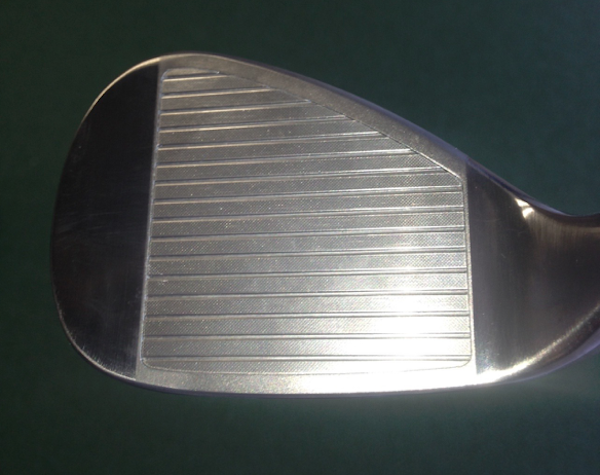
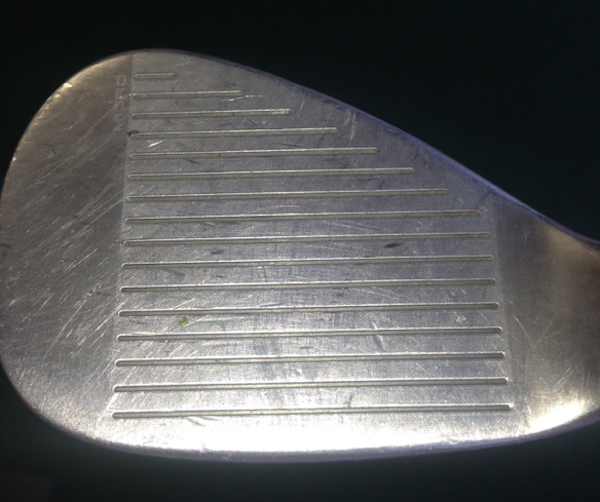
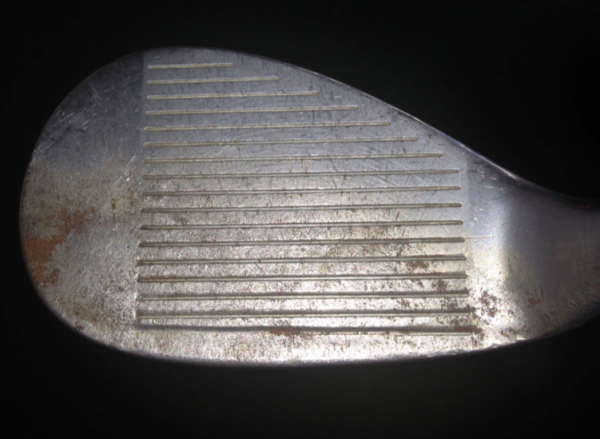
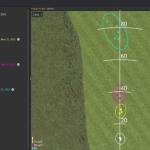
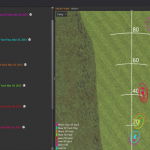
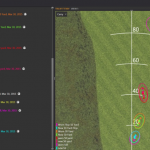


















cody
Jul 2, 2015 at 2:11 pm
This article makes no sense. your data does not back up your conclusion.
Steve Daniel
Apr 18, 2015 at 8:24 am
I would rather know the difference in “raw” vs “chrome” or other finishes. the golf ball I use has a bigger influence on spin than this test with new vs. old.
A
Apr 9, 2015 at 1:53 pm
So, a super worn wedge spins just as much or up to 1000 rpm less than a brand new wedge? That’s the real take-away, right? I suppose that can be also regarded as a 0% or 10-20% reduction.
How much spin does the ball have when it lands?
My understanding, I can’t reproduce the trackman article as I can’t find it at the moment, is that on full shots the spin rate of a ball when it hits the green will roughly be the same (about 500 rpm) and the “lift” aspect has worn off and so it descends.
My understanding is that the more spin that is generated at the start of the ball’s flight, the higher the launch, the shorter the distance the ball flies and the steeper the landing angle. And that it’s this last element, the landing angle, that allows the ball to land and spin back.
Not every player wants or needs that. Did this “study” compare the deviation in spin rates shot to shot? Did the new wedge spin the ball more consistently at the same rate vs the super old wedge, or was there more variance shot to shot? I’d rather know my shot will react similarly on each shot than be concerned solely with the quantity of spin. It’s rather frustrating when you hit the middle of the green and it spins back off the front, or you expect it to spin with your brand new wedge so you hit it 10 yards past and it just stays there. At least in the process of wearing down a wedge, you’ve become familiar with how it reacts. But if you have access to a tour van and you’re familiar with how a brand new wedge reacts, than by all means, swap ’em out every round.
Gary Gutful
Apr 7, 2015 at 3:41 am
There are some super smug gits that comment on these articles.
Personally, I am glad that there are contributors that bother with these experiments (even if the methods aren’t accredited by the Society of Data Crunching Golf Noobs).
Loving the rusty look of my Mack Daddys but would happily replace if/when they stop cutting the pistachios in the spin department.
marcus
Apr 6, 2015 at 9:49 am
This study is scientifically un-measurable. Thanks for trying though.
TheCityGame
Apr 7, 2015 at 10:31 am
I love it when a guy thinks he’s sounding smart but ends up saying something completely stupid.
“This study is scientifically unmeasurable”.
What the hell does that even mean, dude? Are you trying to measure the study? The STUDY is scientifically unmeasurable?
Is there a way that it is measurable but just not in a scientific way?
Do you mean the spin rate on the clubs is not measurable?
If you’re going to be that smug about it (“thanks for trying though”), you better be able to come up with better reasoning than “this study is unscientifically unmeasurable”. Nonsense.
Bob Pegram
Jun 15, 2015 at 6:36 pm
Maybe he means that there are so many variables in how each player’s swing, angle of attack, etc. reacts with the club and ball, that it is impossible to make general conclusions. Even the author of the article mentioned that he was used to the sharper front edge of his most worn wedge which may explain the high spin from that wedge. It works for his swing – or he has gotten used to it and made his swing work with it> – who knows?
MRC
Apr 4, 2015 at 12:20 am
Love my Mizuno wedges even after two years.
The grooves look a bit tired but they come alive on the course.
Thanks for the article Tom.
Dave
Apr 2, 2015 at 7:28 pm
So in order to prevent hitting shots that don’t spin, we need to change our wedges when we notice that they’re not spinning? What a waste of a read.
Ken N
Apr 2, 2015 at 4:52 pm
I just wrote to Barney Adams about this very topic a couple of weeks ago, so I was pleased to see it addressed here today. Part of my question that was left unanswered, though, was: aren’t today’s wedges made of tougher stuff, to last longer, than previous generations of wedges? If the limit was, say, 5,000 strikes per wedge five years ago, shouldn’t I expect to get 25% more out of today’s space-age-materials club? The Big Names are marketing them that way, and they’re certainly priced that way.
Scott
Apr 2, 2015 at 2:55 pm
Tom,
Tom,
Were you surprised that the differences were not more pronounced? Maybe I just can not comprehend the difference in 400 to 600 rpm, it does not seem like a lot. Although 1000 rpm on the full shot seems substantial, it would be nice to see was this means on the green in various conditions. I guess that is something that I can play with on my own.
A side question. I have used a grove sharpening tool. Are there tests at a USGA event to see if the wedges comply? If not, do you know of anyone getting call out for illegal grooves?
Thanks
other paul
Apr 2, 2015 at 2:33 pm
I like that the clubs are different but all the same loft. Because not everyone buys a new set of vokeys every year or two. Lots of people buy different brands each time. I played Cleveland two years ago, now vokeys, thinking of Mack daddy’s next time. This is probably more realistic for the majority of golfers.
other paul
Apr 2, 2015 at 2:07 pm
Well Tom, I look forward to the same article in 5 years when you have had time to spend $450 on 3 identical wedges. I hope you enjoy storing one, hitting one 10,000 times to wear it out, and hitting one 30,000 times to really wear it out. And then rewriting this article for all the angry people.
other paul
May 16, 2015 at 1:12 pm
Looks like there are two of us…
AndyP
Apr 2, 2015 at 1:22 pm
What I got from the article is go source some really old worm wedges from the bargain bin. Cheers
petie3_2
Aug 23, 2015 at 7:40 am
My wedges of choice are 30 year old pre-Vokey Titleists; they’re almost identical to Vokeys but slightly heavier and better in the wet, long grass and sand. I had to pay $9 for one. (sob, outrageous).
mark
Apr 2, 2015 at 1:00 pm
All the statements are correct. The article is correct in that a new wedge will give you more backspin. If it doesn’t interest, you then don’t buy a new wedge. Sandblasting the face is a cheaper alternative and makes the old wedge spin like new and you keep the same feel of the familiar wedge.
Philip
Apr 1, 2015 at 11:56 pm
I wonder if this is why we see so many PGA players with rusty wedges. Maybe the rough surface gives them a consistent spin that doesn’t tend to change as they replace wedges.
Mike
Apr 1, 2015 at 7:30 pm
According to Andrew Rice in The Wedge Project, it’s actually the surface area on the clubface between the grooves that through friction impart the majority of the spin on the golf ball. Andrew recommends to find a local business that does sandblasting and have them sandblast the face of your wedge a few time per year with aluminum oxide. I found a place that does it for $5 a club after which it spins like day it came off the rack.
Philip
Apr 1, 2015 at 11:53 pm
Same reason why some PGA players do not clean the sand out of their wedge grooves after coming out of the bunker – extra spin. I could put some water on my wedges and do a few practice shots in the sand before play to get them ready. I guess I could always empty the sand out of my bag after a few weeks or so.
Tom Stickney
Apr 1, 2015 at 5:04 pm
RG– I take umbrage that you feel this way; I do articles based on facts. I don’t sell clubs nor do I get paid to do these articles. Thus I have no bias other than the facts.
RG
Apr 1, 2015 at 10:53 pm
OR
The other thing is you can over spin a wedge. Sam Snead said,” I never made any money with my ball coming back at me.”
Jackie Burke still plays the same wedge he used to win Augusta in the 50’s.
The”facts” that you represent in your article are based on a data set from a machine, and from the photos you attached three dissimilar clubs. .Empirically speaking your data sets are flawed. In addition here are more “facts” that go into visualizing and creating good wedge shots. other than new grooves and more spin. Touch and feel have a lot to do with it and new wedges can be counter productive to this end.
Thank you for sharing and I do not mean any rudeness toward you and your findings, but your experiment is flawed,
Steve Daniel
Apr 18, 2015 at 9:10 am
Tom, don’t take offence.
as a retired engineer I like data, but there are too many things left unsaid in this review. for this to be a valid test you would need several sets of documented clubs with several samples of balls, people, and etc. that doesn’t mean that I didn’t enjoy the article. I do the same types of things myself.
Nathan
Apr 1, 2015 at 5:04 pm
Brand New Pro V1 Ball makes my wedges feel new again
Perry
Apr 1, 2015 at 12:58 pm
The only way I’d buy this is that if all 3 clubs were the exact same model with the exact same shaft. It’s an awesome idea, but I don’t think you’re comparing apples to apples. You’d get similar results if you had three different head/shaft combinations of new clubs.
Dave S
Apr 1, 2015 at 2:42 pm
Took the words right out of my mouth. From the pics, it’s pretty clear they are not the same brand.
RG
Apr 1, 2015 at 4:54 pm
You are 100% correct. This “article” is another in a long line of “you need to go buy new clubs” articles.
OR
The other thing is you can over spin a wedge. Sam Snead said,” I never made any money with my ball coming back at me.”
Jackie Burke still plays the same wedge he used to win Augusta in the 50’s.
Brody
Apr 1, 2015 at 12:15 pm
Tom,
Nice article, I enjoyed it. Would you foresee those Groove Sharpener tools making any difference on spin rates? Replacing wedges every season can certainly get expensive; I’d be interested in seeing if those tools make any difference on Trackman.
Steve
Apr 1, 2015 at 1:00 pm
+1
Jon
Apr 1, 2015 at 1:56 pm
The only problem with groove sharpeners is if you cut the grooves too deep that club becomes non-conforming. Since I don’t play in any USGA sanctioned tournaments and no longer maintain GHIN, I use the groove sharpener at the beginning of every season (Golf Works part no. GW1111) and it does a pretty good job. It saves me $120/year which buys me about 3 rounds of golf.
Mikko U
Apr 1, 2015 at 11:56 am
Interesting to read that there wouldn’t be much difference on partial swings. For me there was a huge difference going from three years old wedges to new ones even on 40-yard chip/pitch shots. They turned into hop and stop rather than hop and roll out.
Also, isn’t there quite a lot of slippage from any 58* wedge? So wouldn’t some 50-52 degree wedges have worked better as there’s less slipping due to the loft and the grooves would have probably made a bigger difference (or showed more precisely that there isn’t a difference)?
Chuck
Apr 1, 2015 at 11:42 am
I don’t doubt the data; but almost as important to spin, is the feel I have developed with older wedges. Weight, balance, bounce, etc. Before the groove rule went into effect, I bought a handful of the kind of gap wedge (Vokey 452.08) and sand wedge (Vokey 258.08) that I love, and I nurse them as much as possible. So while the grooves do get worn, at least they are pre-rule grooves. Legal for me until 2024.
This all gives real meaning to the short-lived (why???) TaylorMade solution, which was to supply exchangeable faces for its XFT series wedges.
http://www.taylormadegolf.asia/bn/xft-wedge-specifications.php